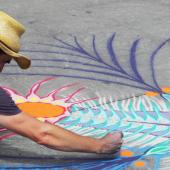Japanese Art
JJapanese art encompasses a variety of art forms, including painting, sculpture, printmaking, ceramics, textiles, woodcarving and more. Japanese art has a long history and is closely linked to Japanese culture and religion. Many Japanese artworks are inspired by Buddhist, Shinto and other religious themes. Japanese artists have also developed unique techniques to create their works, such as using ink and colours applied to silk or paper. Japanese art is also known for its intricate and detailed designs, which often have deep meaning.
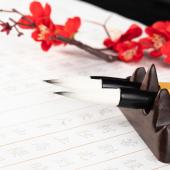
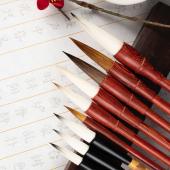
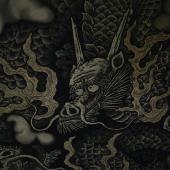
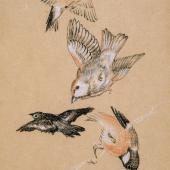
What is there to say about the history of Japanese art?
Japanese art has a long and rich history that spans several centuries. It is unique and has produced many different styles and techniques. The earliest forms of Japanese art date back to the 8th century, when artists began to incorporate religious themes into woodblock prints and paintings. Over the centuries, various styles developed, including ukiyo-e, a popular form of woodblock art that emerged in the 17th century. Other popular styles include sumi-e, a traditional form of ink painting, and ikebana, a form of flower arrangement. In recent years, Japanese art has also absorbed many Western influences, making it even more diverse and interesting.
Who were the pioneers of Japanese art?
The pioneers of Japanese art are many, but some of the most famous are:
- Kano Masanobu (1434-1530)
- Sesshu Toyo (1420-1506)
- Tawaraya Sotatsu (1570-1640)
- Ogata Korin (1658-1716)
- Katsushika Hokusai (1760-1849) und
- Utagawa Hiroshige (1797-1858).
What are the characteristic features of Japanese art?
- Precise lines: Japanese art is known for its precise lines, often depicted in complex patterns and designs.
- Minimalism: Japanese art is often minimalist, with simple shapes and colours that convey deep meaning.
- Nature: Japanese art is often inspired by nature, with motifs such as flowers, trees, mountains and oceans.
- Symbolism: Japanese art is full of symbolism, which can often be traced back to Buddhist or Shinto beliefs.
- Calligraphy: Calligraphy is an essential part of Japanese art, where characters are written in an elaborate way.
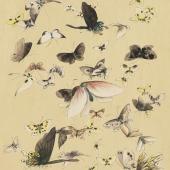
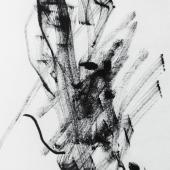
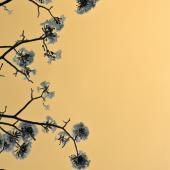
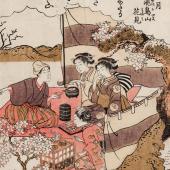
Where do you practise Japanese art?
Japanese art is practised in many different venues, including museums, galleries, art fairs and other public venues. There are also many artists who practice Japanese art in their studios and studios. Some artists also travel to Japan to work and practice their art.
What materials do you need to actively practise Japanese art?
In order to actively practise Japanese art, one needs various materials, including:
- Paper: For creating origami, calligraphy and other Japanese art forms.
- Colours: For creating woodblock prints, painting and other Japanese art forms.
- Tools: For creating woodblock prints, origami and other Japanese art forms.
- Bamboo: For creating bamboo mats, bamboo furniture and other Japanese art forms.
- Silk: For creating silk painting, silk embroidery and other Japanese art forms.
- Wood: For creating wood carvings, wooden furniture and other Japanese art forms.
What techniques are used in Japanese art?
Various techniques are used in Japanese art, including:
- Sumi-e (ink painting): This technique is done with ink and brushes on paper or silk.
- Ukiyo-e (woodblock print): This technique is executed with woodblock prints on paper or silk.
- Ikebana (flower arrangement): This technique is performed with flowers, leaves and other materials on a special platform.
- Kintsugi (gold repair): This technique is used to repair damaged items with gold.
- Origami (paper folding): This technique is performed with paper to create complex figures.
- Haiku (poem form): This technique is used to write short poems that relate to nature.
Which cities are leading in Japanese art?
The leading cities for Japanese art are Tokyo, Kyoto, Nara, Kamakura, Osaka and Fukuoka. These cities have many museums and galleries that exhibit Japanese art. You can also find many traditional Japanese arts and crafts in these cities, such as wood carvings, lacquer work, calligraphy and ukiyo-e.
How do you learn Japanese art?
To learn Japanese art, it is advisable to take a course at an art college or academy. There are also many online courses you can take to learn the basics of Japanese art. Some courses focus on specific aspects of Japanese art, such as ukiyo-e painting, woodblock printing or ikebana. It is also possible to do an internship at a Japanese art museum or gallery to learn more about Japanese art.

Where can you learn Japanese art?
There are many ways to learn Japanese art. Some options are:
- Take a course at an art college or university. These courses can cover a wide range of subjects, from traditional Japanese painting to modern techniques.
- Attend a workshop with a local artist or art gallery. These workshops can provide an introduction to Japanese art and help you improve your skills.
- Take online courses. There are many online courses that can help you learn Japanese art. These courses can cover a wide range of topics, from traditional Japanese painting to modern techniques.
- Complete an internship with a local artist or art gallery. These internships can help you learn more about Japanese art and improve your skills.
- Read a book about Japanese art. There are many books that can help you learn more about Japanese art. These books can cover a wide range of topics, from traditional Japanese painting to modern techniques.
What are the results or artworks of Japanese art?
Japanese art encompasses a variety of art forms, including painting, printmaking, sculpture, ceramics, textiles, woodcarving, metalwork and works on paper. Some of the most famous Japanese artworks are the 17th century woodcarvings, 19th century ukiyo-e prints, 12th century calligraphy and 16th century Japanese calligraphy and painting styles. Other well-known Japanese artworks are the 17th century Japanese calligraphy and painting styles, the 18th century Japanese calligraphy and painting styles, the 19th century Japanese calligraphy and painting styles and the 20th century Japanese calligraphy and painting styles.
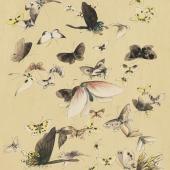
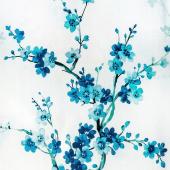
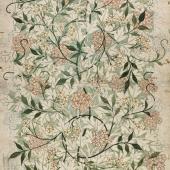
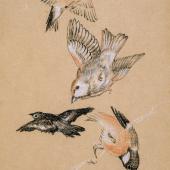
What are the names of significant films on Japanese art?
- The Last Samurai (2003)
- Memoirs of a Geisha (2005)
- Rashomon (1950)
- Kagemusha (1980)
- Spirited Away (2001)
- Princess Mononoke (1997)
- Tampopo (1985)
- The Hidden Fortress (1958)
- Ran (1985)
- Yojimbo (1961)
- Kwaidan (1964)
- Ugetsu (1953)
- The Burmese Harp (1956)
- Tokyo Story (1953)
- Seven Samurai (1954)
Which book titles are significant for Japanese art?
- "The Art of Japanese Printmaking: Ukiyo-e from the 17th to the 20th century" by Tadashi Kobayashi
- "The Japanese art of appreciating stones: suiseki and its use in bonsai" by Vincent T. Covello
- "The Japanese Art of War: Understanding the Culture of Strategy" by Thomas Cleary
- "The Japanese Tattoo" by Sandi Fellman
- "The Japanese garden: design and meaning" by Marc P. Keane
- "The Japanese tea ceremony: from ancient ritual to contemporary art" by Jennifer L. Anderson
- "The Japanese house: architecture and interior design" by Naomi Pollock
- "The Japanese Print: A Historical Guide" by Jack Ronald Hillier
- "The Japanese Sword: A Comprehensive Guide" by Kanzan Sato
- "The Japanese Art of Reiki: A Practical Guide to Self-Healing" by Bronwen Stiene.
What criticisms or challenges does Japanese art face?
- The lack of innovation: Japanese artists have a long tradition, but they are often unable to develop new ideas and techniques to modernise their art.
- The lack of international recognition: Japanese artists find it difficult to market and sell their work internationally.
- The lack of financial support: Japanese artists often do not have the financial means to produce and market their art.
- The lack of access to resources: Japanese artists often do not have the resources to produce and market their art.
- The lack of access to exhibition opportunities: Japanese artists often do not have the opportunity to exhibit their work in galleries or museums.
What museums are there for Japanese art?
- Tokyo National Museum (Tokyo)
- Kyoto National Museum (Kyoto)
- National Museum of Modern Art, Tokyo (Tokyo)
- National Museum of Art, Osaka (Osaka)
- The National Museum of Western Art (Tokyo)
- The National Museum of Japanese History (Chiba)
- The National Museum of Ethnology (Osaka)
- The National Museum of Art, Kyoto (Kyoto)
- The National Museum of Modern Art, Kyoto (Kyoto)
- The National Museum of Emerging Science and Innovation (Tokyo)
- The National Museum of Nature and Science (Tokyo)
- The National Museum of Art, Tokyo (Tokyo)
- The National Museum of Japanese Art (Kanagawa)
- The National Museum of Oriental Ceramics (Tokyo)
- The National Museum of Modern Art, Kanazawa (Ishikawa)
- The National Museum of Modern Art, Nagoya (Aichi)
- The National Museum of Art, Nara (Nara)
- The National Museum of Art, Hiroshima (Hiroshima)
- The National Museum of Art, Fukuoka (Fukuoka)
- The National Museum of Modern Art, Sapporo (Hokkaido)
Which quotes relate to Japanese art?
- "Art is the soul of life." - Katsushika Hokusai
- "Art is a mirror of the soul." - Yayoi Kusama
- "Art is a way to understand the world." - Takashi Murakami
- "Art is a way to change the world." - Yoko Ono
- "Art is a way to explore the world." - Isamu Noguchi
What is the significance of Japanese art for society?
Japanese art has a long and rich history and plays an important role in Japanese culture. It is an essential part of Japanese identity and represents Japanese culture, traditions and values. Japanese art is a symbol of Japanese culture and is used as a means to preserve and strengthen Japanese identity. It is an important part of Japanese culture and has a strong impact on Japanese society. Japanese art is an essential part of Japanese culture and is used as a means to preserve and strengthen Japanese identity. It is an important part of Japanese culture and has a strong impact on Japanese society.



